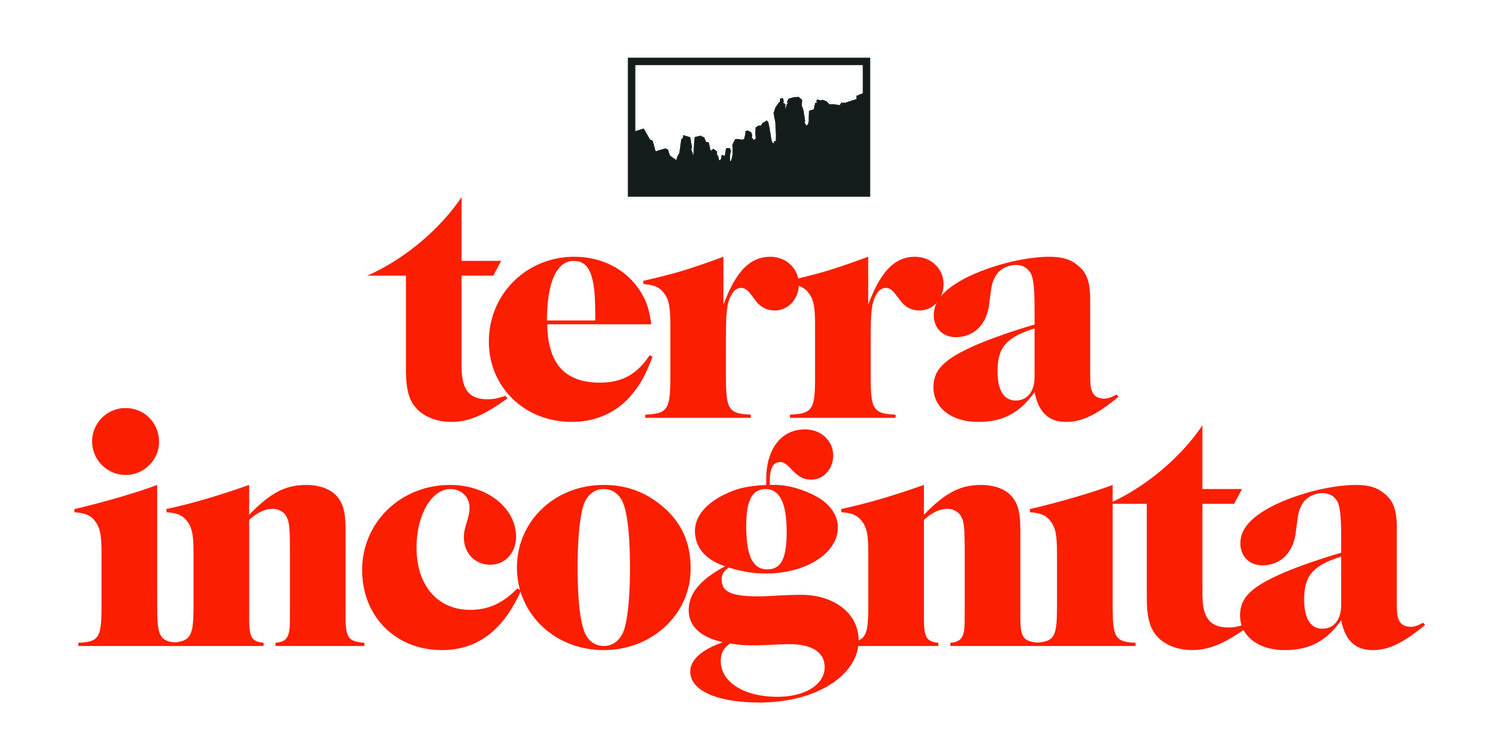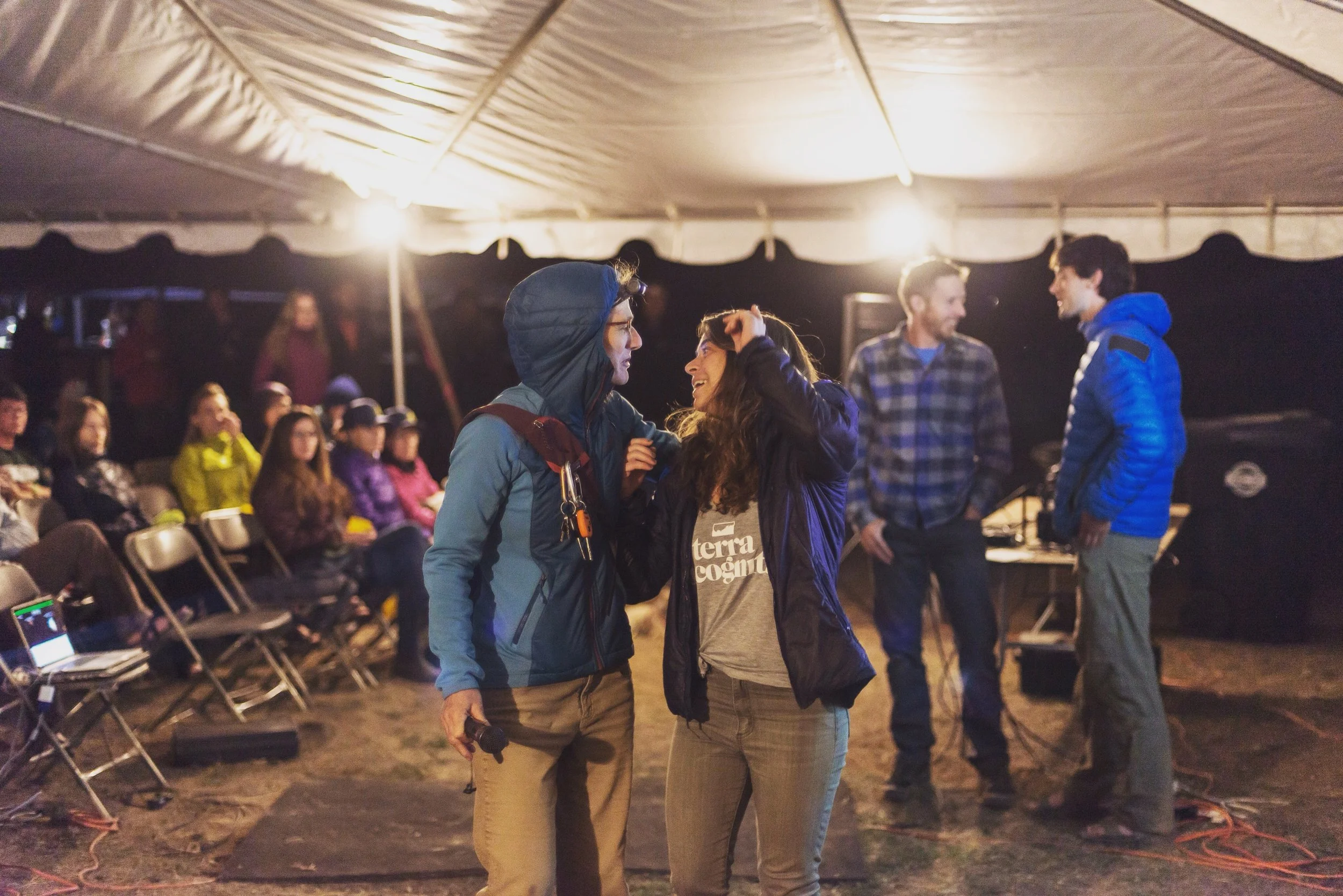Whiteness in the Outdoor Industry
Cover Image Courtesy of Nora Jameson Photography.The video below was created to explain the interruption that took place at the American Alpine Club's Craggin' Classic climbing festival held in Smith Rock, Oregon September 15-17, 2017.
[Image description: Erin Monahan gets escorted out of the tent after she interrupted Tommy Caldwell’s tired and boring presentation to ask him some important questions about whiteness and privilege, while people in the audience look on, and Caldwell and event organizer awkwardly stare at each other.]
White supremacy is ingrained in the founding of America. In "Settler Colonialism Then and Now: A Conversation Between J. Kehaulani Kauanui and Patrick Wolfe," Patrick Wolfe discusses how white people in Australia are settlers, though we can extend this to Turtle Island, what we know as the United States, as well. We exist on stolen land. In terms of material goods, financial security, and ease of moving through the world, white people owe our claims to any of these things due to the ongoing process of colonization. White people are the beneficiaries of the dispossession and continued elimination of Indigenous people.
Too often it is common to find an article or blog post that talks about American history as if colonization is a thing of the past and as if the original inhabitants are absent. Sometimes the narratives put forth a mystical kind of rendering about Indigenous people as if they have somehow "disappeared." But Jolie Varela, founder of Indigenous Women Hike, has been working hard in outdoor recreation spaces to put this myth to rest. Indigenous peoples live in America as doctors, lawyers, teachers, environmental activists, car mechanics, therapists, etc. We find this erasure in the discussions surrounding sacred places like Mato Tipila, what is known as Devil's Tower in Wyoming, Bears Ears in Utah, or Payahüünadü (Owens Valley) in California.
Colonization continues to this day. The bureaucracy of our government plays charades of respecting Native communities, but it has effectually led to dispossession. Simultaneously, during the reconstruction period of America, African Americans were considered a political and economic threat to whites. Southern whites needed to find new systems of racial and economic control, which led to Jim Crow segregation laws. As Patrick Wolfe describes, the process was two-fold: the elimination of Indigenous peoples in tandem with African enslavement. This produced surplus profit for the colonizer, which has created intergenerational wealth for white people like me.
Whiteness is a system of domination. It will not be dismantled by "baby steps." Genuine change will not be brought about by converging with the same, old oppressive systems. Real, lasting change will not come until we address racism and white supremacy in our behaviors, language, and organizations. White people need to acknowledge and confront our inherent racism and listen to the guidance of folx like Rachel Cargle, Bani Amor, and Ericka Hart. Follow accounts on Instagram like America Hates Us, Indigenous Goddess Gang, and Vienna Rye.
The outdoor industry has an exact hand in the ongoing erasure of Indigenous people. It very much writes Natives out of existence. The contemporary implications can be seen everywhere in the media and at events, which bolster the absence of Indigenous voices and narratives. Some prime examples are The North Face campaign, "Walls Are Meant for Climbing," and Patagonia's, "The President Stole Your Land." There are Indigenous organizations, however, who are changing the script like Indigenous Women Hike, Indigenous Rising, and Honor the Earth, to name a few.
Let us never forget that we are not here because of natural progression and pastoral homesteading, but that we are here, as Patrick Wolfe describes, through invasion as a protracted structure, not a single event.
Some resources for further learning (you can listen to all of these on Spotify too):
Ambient Dominion: How ‘Free Solo’ Points to an Epidemic of Toxic Masculinity




